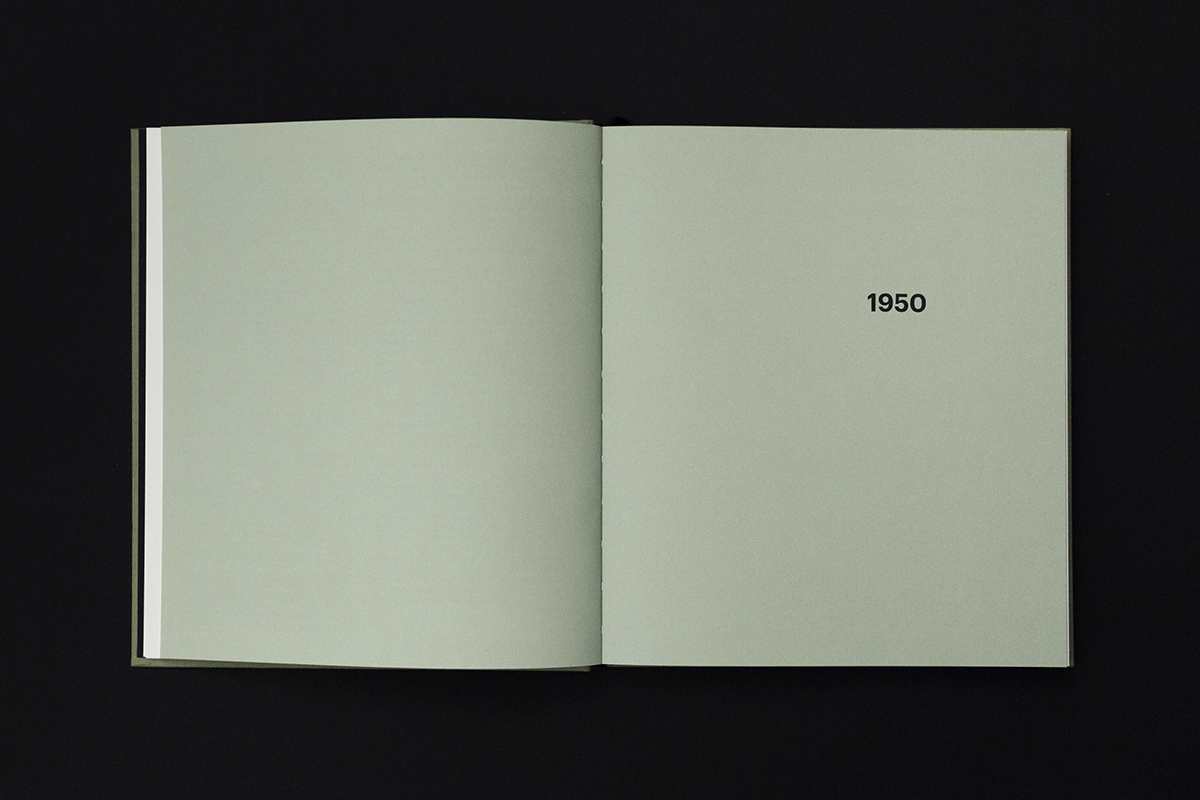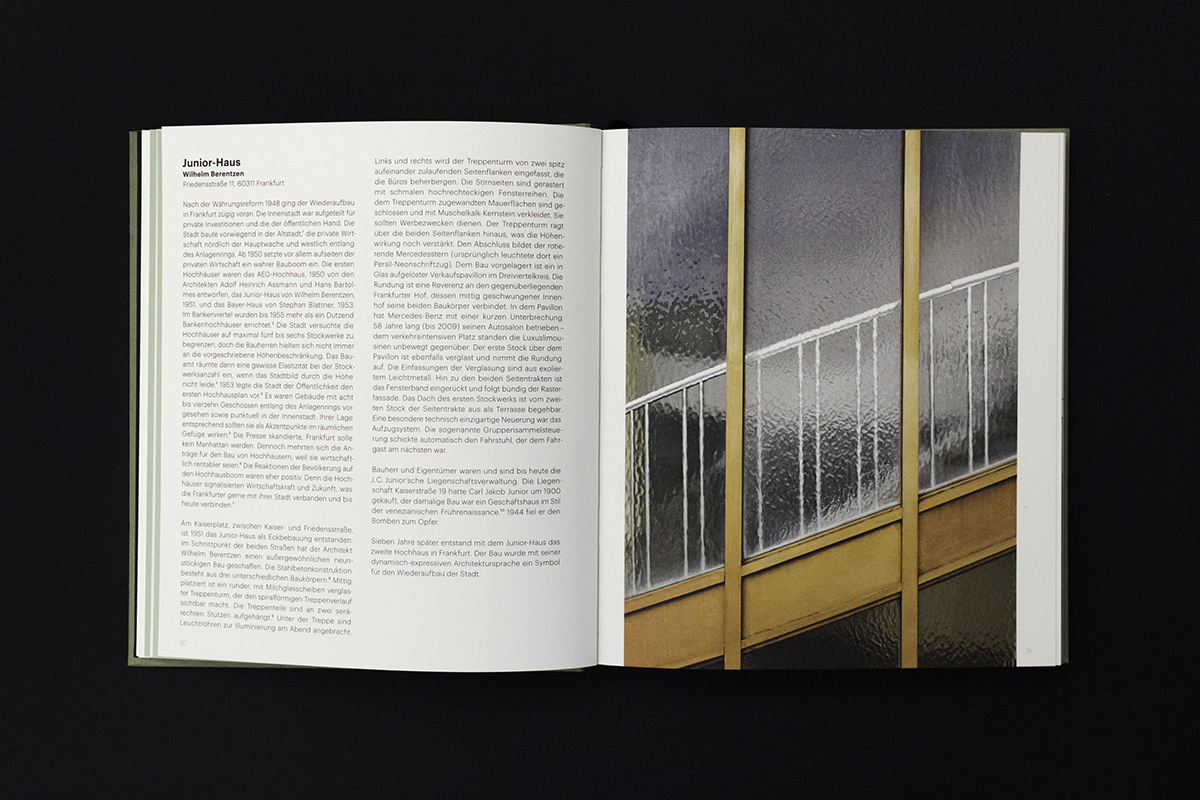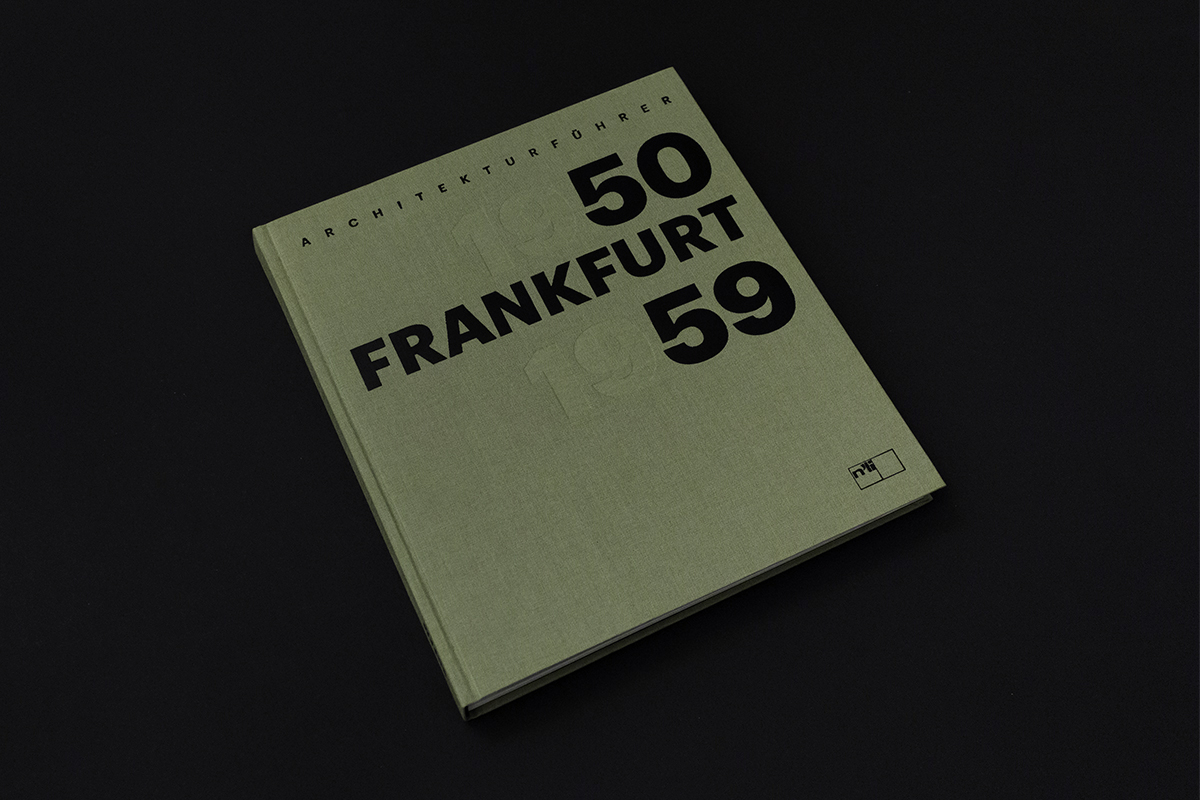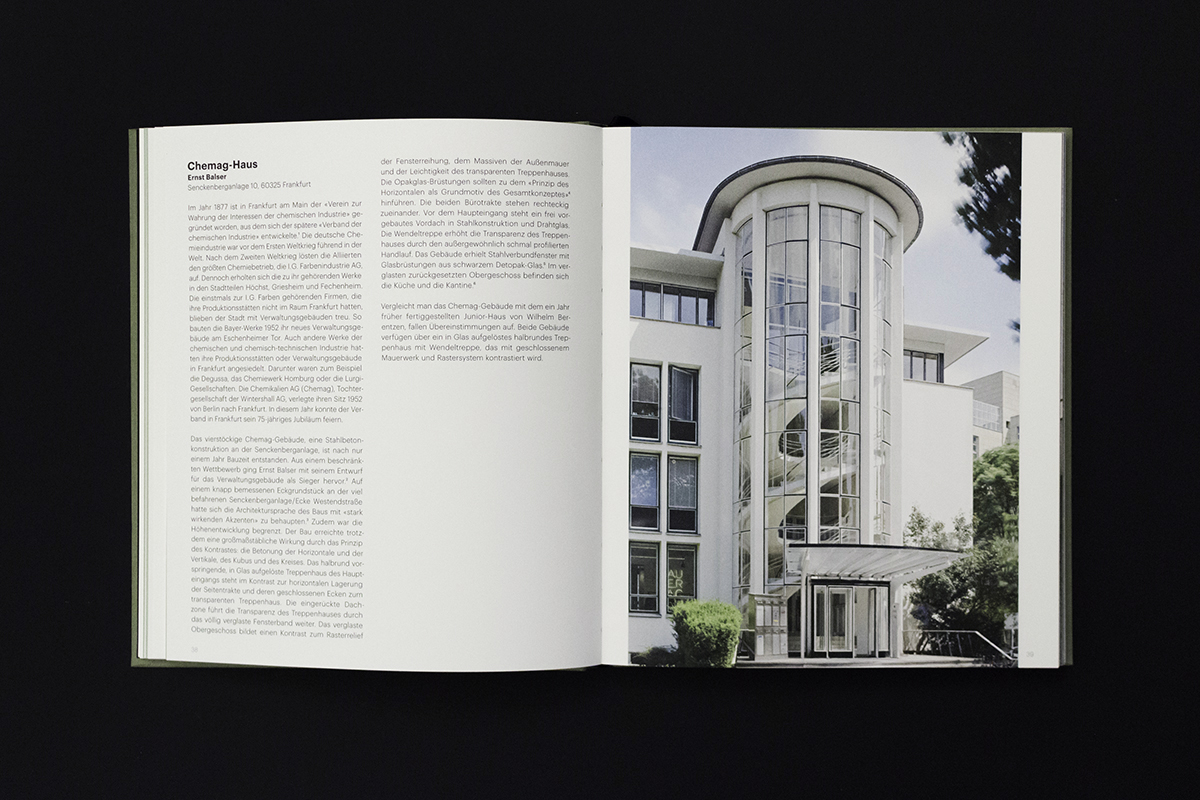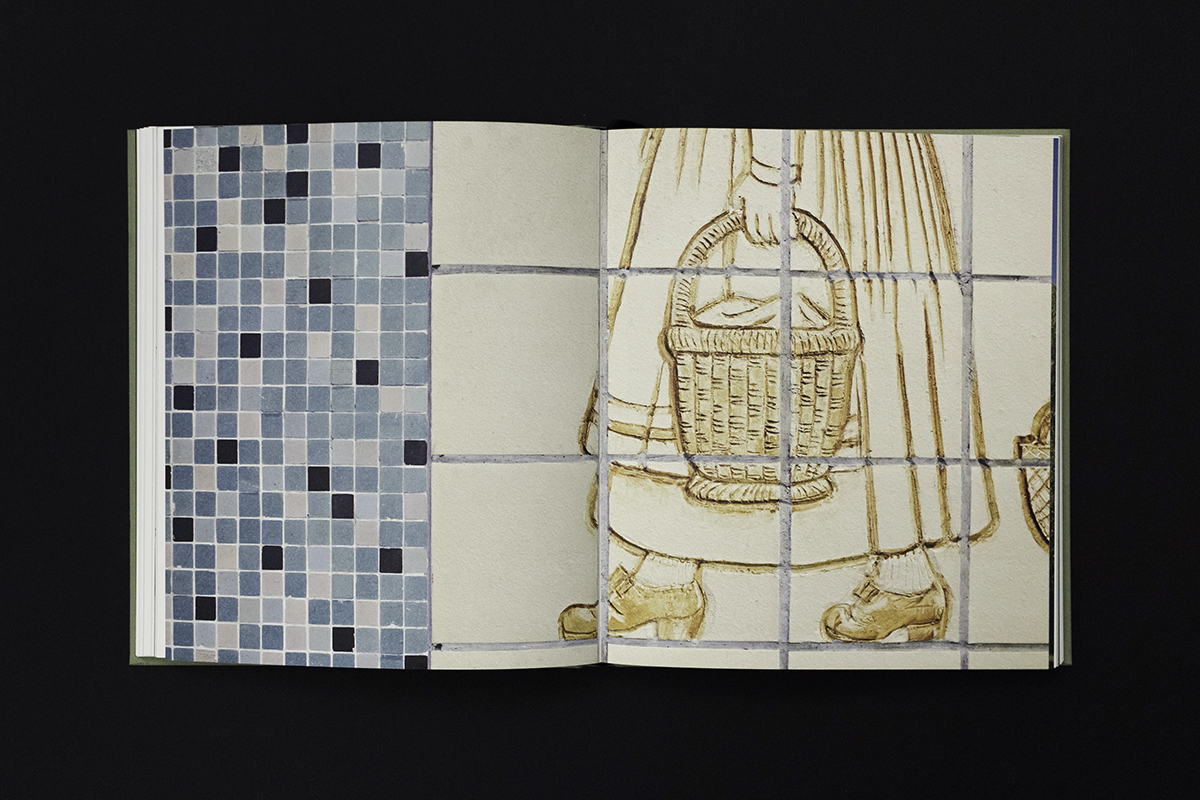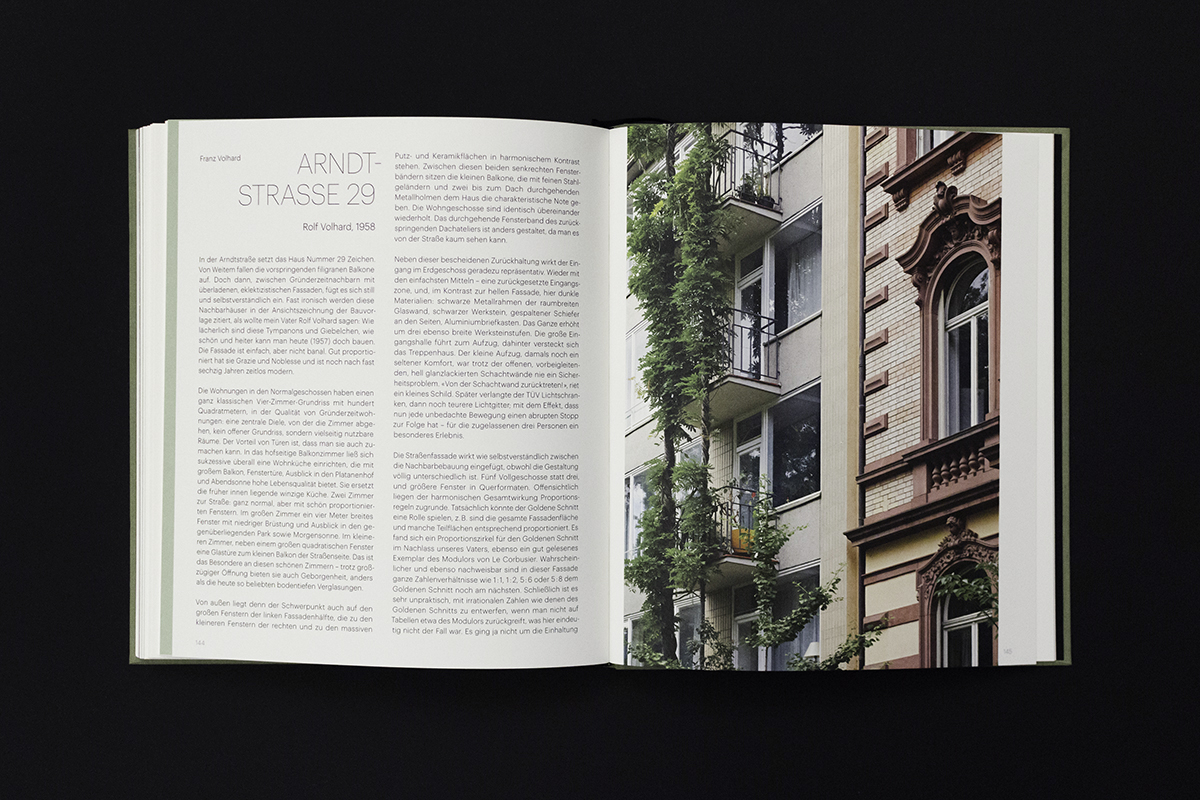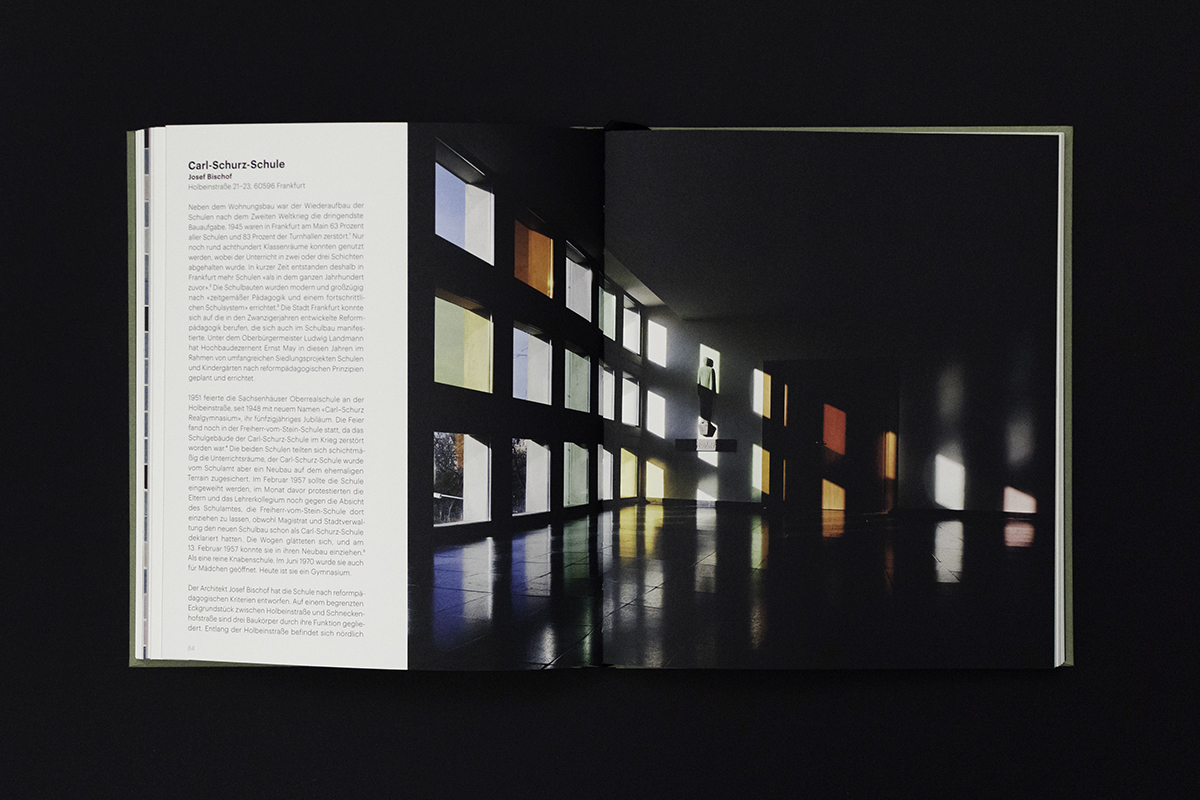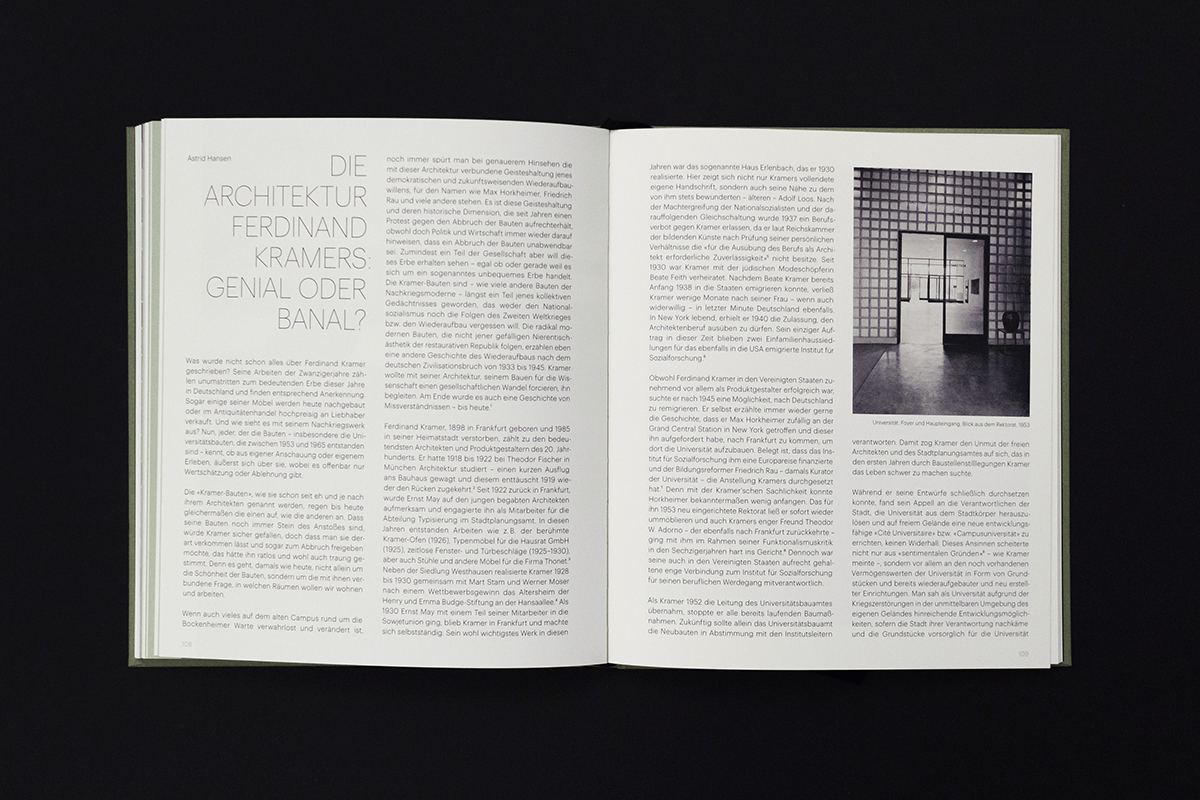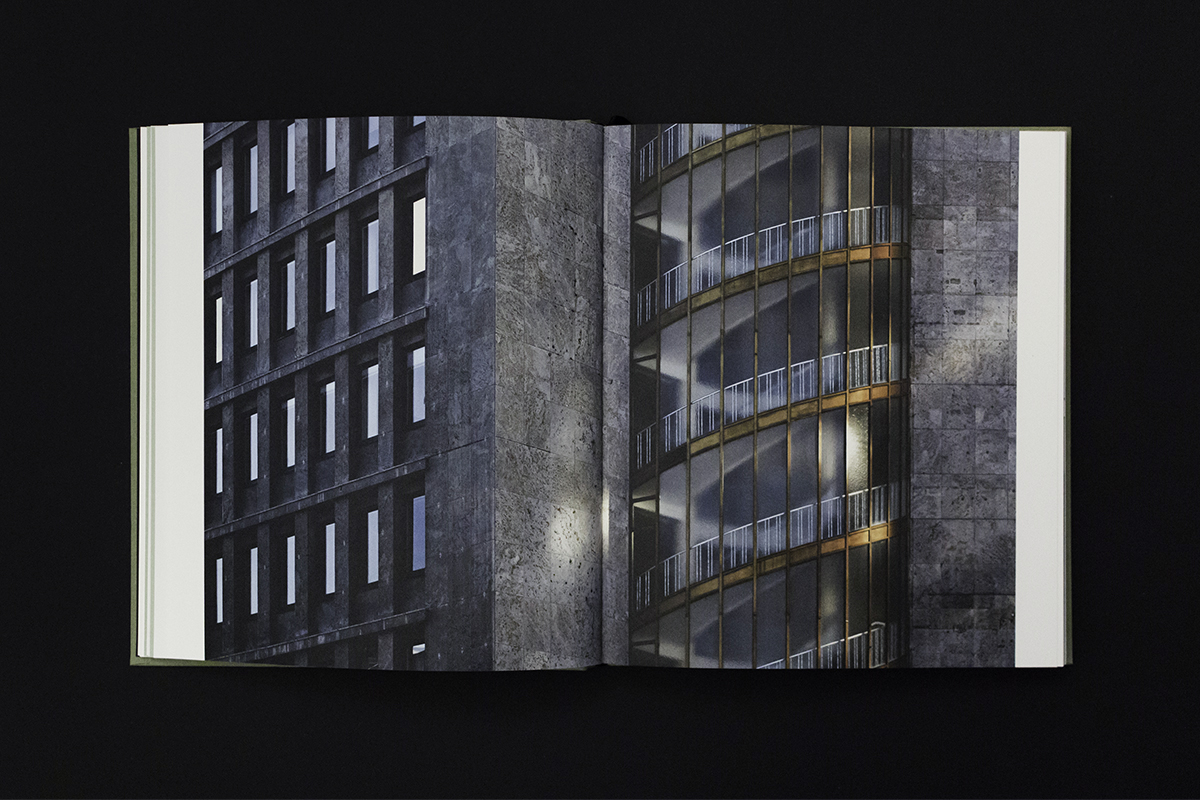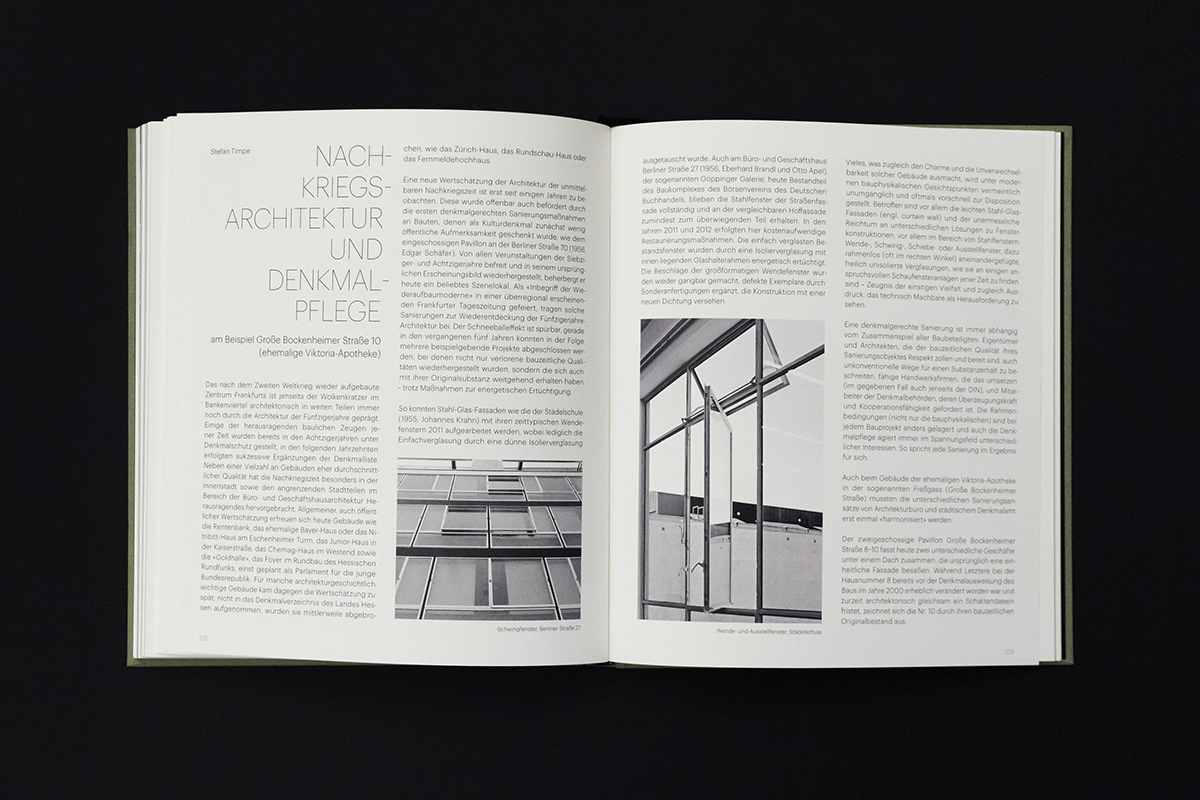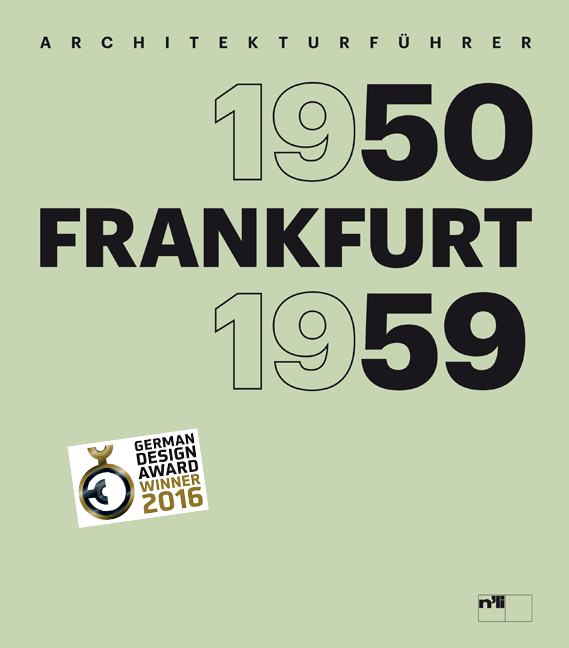
44,00 €
Out of stock
–
recommend it
–
Wilhelm E. Opatz, Deutscher Werkbund Hessen (eds.)
–
Frankfurt 1950–1959
Architekturführer [Architectural Guide]
+++ GERMAN DESIGN AWARD WINNER 2016 +++
This volume is the first of the Frankfurt Architectural Guides series dedicated to the recent architectural history of the city. Taking a decade-by-decade focus, the series begins in the nineteen fifties and the development of architecture is examined using 10 selected examples. The iconic works of the time are presented, some of which are either due to be demolished today, or are no longer standing.
Volume 1 is dedicated to the Golden Hall of the Hessian Broadcasting Corporation and the Junior, the Chemag and Bayer Buildings, the Market Hall, the Regional Finance Office, the Hauptwache Car Park, the Carl-Schurz School, the Oeder Weg residential building and the Heart of Mary Church. These were the work of young architects and builders who had established their businesses after returning from war service, including Gerhard Weber, Wilhelm Berentzen, Ernst Balser, the Blattner brothers, Max Meid and Helmut Romeick.
The editors were supported in their work by prominent architecture critics, historians of art and design, conservationists and monument conservators. The current color photographs of the ten buildings are by the young Frankfurt photographer Georg Dörr and are placed in contrast with the black and white photos of Ursula Edelmann, the Grande Dame of post-war photography in Frankfurt. She photographed – the now demolished – Deutsche Genossenschaftsbank by Alfred Schild.
The essay texts are by architecture critic Dieter Bartetzko, cultural studies scholar Gottfried Edelmann, art historian Almut Gehebe-Gernhardt, conservationist Astrid Hansen, designer and design historian Lore Kramer, architect BDA Rolf Schmidt, art historian Adrian Seib, conservator Stefan Timpe and architect BDA Franz Volhard.

